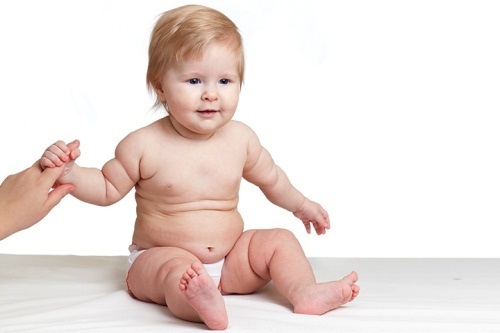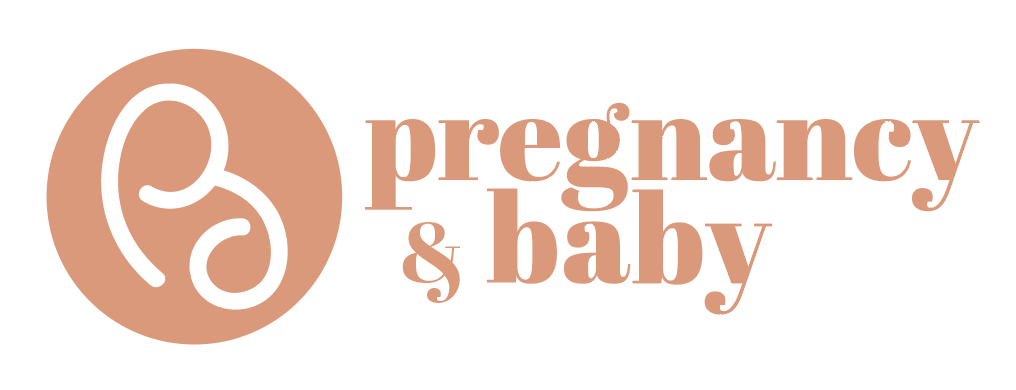The tiny bundle of joy now makes attempts to sit on her own, has a firm grip, and babbles to herself while playing with her hands and feet. You would be amazed at how many things babies can do by the time they are five-months-old.
5-Month-Old Milestones Chart
| ACHIEVED DEVELOPMENTAL MILESTONES |
EMERGING DEVELOPMENTAL MILESTONES |
| Sits with support |
Sits on his own without support |
| Rolls over from back to tummy |
Rolls over from back to tummy and then to the tummy again |
| Responds to sounds |
Responds to his name |
| Makes few single consonant sounds |
Can make sounds with more consonants |
| Tongue grows sensitive to taste |
Can learn to taste food after six months of age |
| Shows curiosity towards stationary objects |
Can track moving objects |
| Communicates using basic expressions |
May use sounds in conjunction to expressions |
| Flexes legs during tummy time |
Puts weight on legs when held vertical |
| Tests basic cause and effect |
Uses cause and effect knowledge for complex actions |
| Recognizes familiar faces |
May try to communicate with known people |
A 5-Month-Old Baby’s Developmental Milestones
We have divided these developmental milestones to three categories and will see the key formative landmarks under each category.
Cognitive Developmental Milestones
These developmental milestones pertain to intelligence, thinking, and decision-making capabilities.
- More keen and discerning: Your baby is now keen on watching objects and people around him as they captivate him. As he gets a sense of reflections, he will smile and giggle looking at his image in the mirror. He is more alert than ever and shows an increase in his level of curiosity.
- Gets distracted easily: As he has a penchant for looking at new objects, distracting your baby would be very easy. Just prop a new toy or object in front of him, and he stops whatever he was doing to look at the fascinating new thing.
- Can distinguish between colors: The baby still shows preference to bold colors but will be able to differentiate among multiple shades of a particular color. This is an indicator of a better eye and brain coordination along with improved retinal function.
- Shows basic language development: By the fifth month, the baby’s language development will be right on track. He would have his mini-vocabulary of simple mono-consonant sounds such as “gaa”, “aaa”, “maa”, “daa”, etc. Your baby coos a lot, which now comes effortlessly to him. This is due to improved vocal cord function and the brain’s ability to produce sounds from it.
- Tests cause and effect: When he learns that a rattle can make a sound, he will move it again and even hit it against another object. Your baby’s experiments will get messier since he will now drop anything to the ground just to explore the outcome. Time to stash away all those breakable items!
Physical Developmental Milestones

These developmental milestones are about the baby’s physical growth and motor skills.
- Better hand control: Things do not slip out from his hands anymore as he has a better grip than before. Your baby will promptly use his hands to pick up objects and will even stretch them to reach objects that are beyond immediate reach. Your baby will also play with his hands while making more nimble movements with his fingers. This is also the time when he will show the first signs of holding his feeding bottle independently. Don’t be surprised if he throws the bottle at another object as making sounds from objects is babies’ way of experimenting with their tiny hands.
- Raises chest when prone: When the baby is lying prone (on his tummy), he will push his elbows down and raise his chest upwards. This action will later help him when he crawls.
- Better controlled neck movements: Neck muscles are stronger, and his neck is less wobbly, which gives him a better control over the neck.
- Makes attempts to sit: Your 5 month old baby will make his first attempts to sit and be successful at it. Your baby will be able to sit if you support his back or make him sit on your laps.
- Can roll over in one direction: He can now roll over back to the tummy. Once he gets on his tummy, he will attempt to flex his legs. This is his way of strengthening his muscles before he begins to crawl.
- Improved sense of taste: There are now more nerve endings on the baby’s tongue than ever before. Anything that seems interesting goes straight into the mouth. That is a little one’s way of exploring the world around him.
- Better hearing and muscle coordination: Say something aloud, and your little one will turn his head and look at you. He may not understand his name but understands that you are talking to him. The 5-month-old even turns his head to other sounds that he finds interesting thus indicating improved hearing-muscle coordination.
- Sleeps in blocks of hours: The baby begins to sleep for longer duration in blocks of hours, especially at night. This is an indicator of his improved sleep functionality.
Continue on next page...
Social And Emotional Developmental Milestones
Your baby not just grows mentally and physically but also achieves those milestones that help him bond with people around him.
- Displays recognition of familiar faces: The baby will have an acute recognition of individuals that he had met in the past. He smiles and looks jovial when seeing someone familiar. He also moves his hands vigorously, which is his way of greeting that person. A better long-term memory is the reason for this improved social behavior.
- Shows anxiety towards strangers: Your five-month-old will show his first pangs of anxiety when left in the company of someone he does not know. If you let a stranger hold your little one then be prepared for a blaring tantrum. This anxiety towards unknown people is a primitive display of trust and confidence, or the lack of it, which constitutes the building blocks for complex relationships in the future.
- Loves playing with parents: At five months, your baby is more playful than ever before. Roll a ball towards him, and he gets all excited about it. There is a certain excitement that you notice in all his play activities especially when playing involves people he loves and trusts the most – his parents.
- Expresses emotions: A smile will be the most frequent emotion of your baby. He now actively displays displeasure, excitement, and fatigue. He will switch between toys after playing with one showing the first signs of boredom.
Those were the various developmental milestones achieved by your baby when he is a jolly five-month-old fella. Parents can always take steps towards nurturing the physical, mental, and social development of the baby for his healthy and timely growth.
6 Tips To Improve The Development Of Your Five-Month-Old
Encourage and assist your five-month-old baby’s development through these easy steps and practices:

- Keep the conversations going: Speak to your little one as often as you can. He may not understand what you are saying but this will still engage his mind, and he may even pick up a few simple words such as his name.
- Tummy time play is a must: Tummy time is critical for the development of your baby since it helps him exercise every muscle in his body. Babies learn muscle movement through this play time. Therefore, dedicate ample time for tummy play every day. During tummy time, place all his favorite toys around him, and encourage him to reach out to them. This will help him have better dexterity.
- Read aloud brightly illustrated books: Make him sit on your lap and read a book with brightly-colored illustrations, aloud. Viewing multiple shades of colors stimulates the baby’s eyes and brain.
- Show him bright colored toys: Bright, multi-coloured toys fascinate your baby and play a crucial role in improving his vision palette. Stimulate his vision and visual cortex of the brain by giving him colorful toys.
- Have him sit with support: If your baby loves sitting and puts in efforts to do so, then make him sit with support preferably by making him sit on your lap. This is a great activity, just like tummy time, where the baby’s muscles get ample exercise and become stronger.
- Let him meet new people: Just because he is not comfortable around new faces does not mean you cut him off from others. Meeting new people is a great way of honing his basic social skills, while also stimulating his long-term memory.
Your five-month-old baby will certainly be on a sound development path when his milestones are further sharpened through play and activities. But there are always certain red flags in his development that you must be alert about.
When To Be Concerned?
If your baby is not developing at a normal pace, then he may show the following traits, which are signs of acute developmental backlogs:
- Does not respond to sounds: A five-month-old baby may not know you are talking to him, but he will definitely turn his head when he hears his parents speaking. He will show a general interest towards voices of primary caretakers. A lack of response or an extremely underwhelming response towards sounds could be an indicator of a hearing problem, which you must get checked.
- Poor hand control and grip: Your baby has a better sense of control on his hands. But if his hands always seem floppy with disconcertingly weak grip then it could be that his muscles are not developing at a normal pace. Poor hand control and grip could be an indicator of muscular dystrophy, and you should let a pediatrician take a look at your baby.
- Has a stiff body with awkward movements: If he generally stays stiff and seems to have very poor voluntary muscle control then that is alarming. At this age, the baby prepares to have quality tummy time. A stiffness of muscles can be an indicator of a plethora of problems including serious autistic-spectrum disorders. Do not jump to conclusions though and take your baby to the doctor.
- Displays no expression or affection towards parents: A baby may not smile and greet every human he meets, but he is definitely going to express joy and elation on seeing a parent. If the baby has zero expressiveness towards parents, shows no alertness, and does not smile, then it could be a sign of a developmental backlog.
- Shows poor speech development: Babies tend to use their vocal cords a lot now. Your baby will keep you entertained with his ‘coos’ and ‘gurgles’. But if he is always quiet and does not babble, then that is definitely unsettling. It could be an early sign of speech impairment, and the sooner you get him under medical supervision, the better are his chances of subsequent recovery.
Do remember that babies develop at different paces. Do not fret if your baby does not achieve something at the required stage and also, do not force him to do anything. The best way a baby can learn something is by understanding it. Have patience and let your baby achieve his milestones while keeping an eye out on his progress. Do not hesitate to consult a doctor if you think that he is not developing at the right pace.
Subscribe to our mailing list and LIKE US on Facebook for useful insights on parenthood!
Article written by Moumita Ghosh






